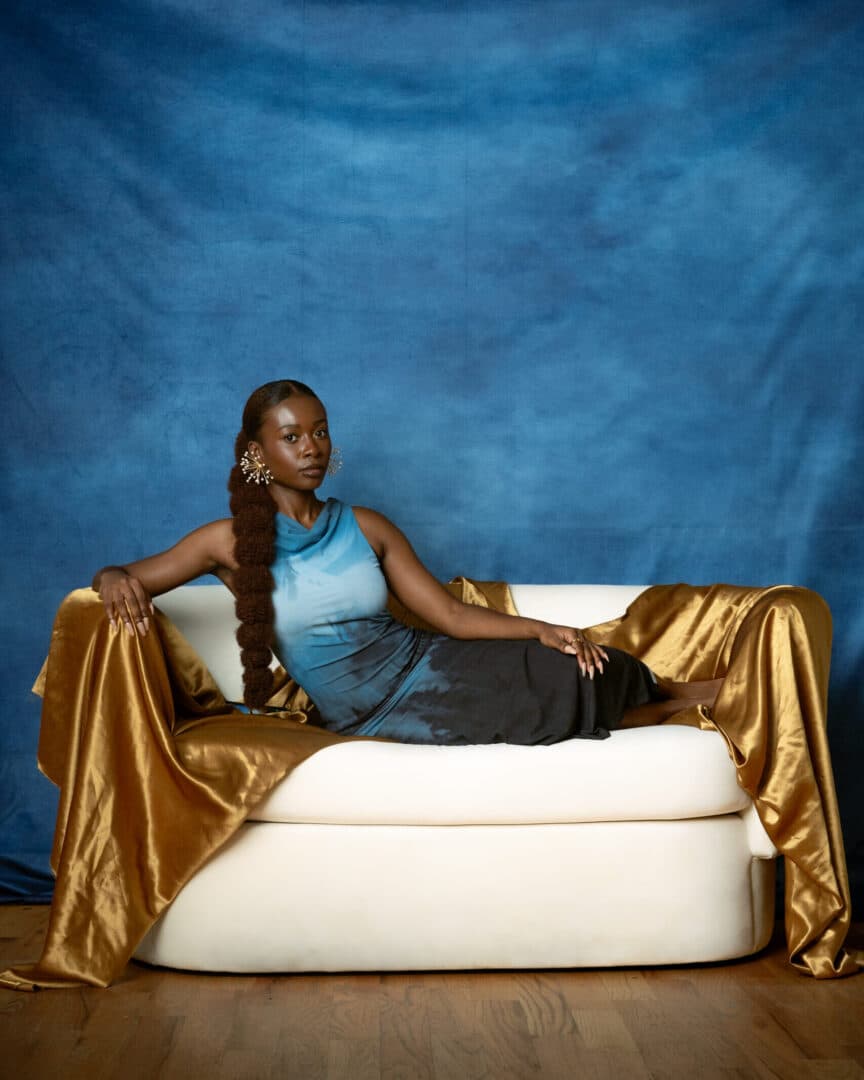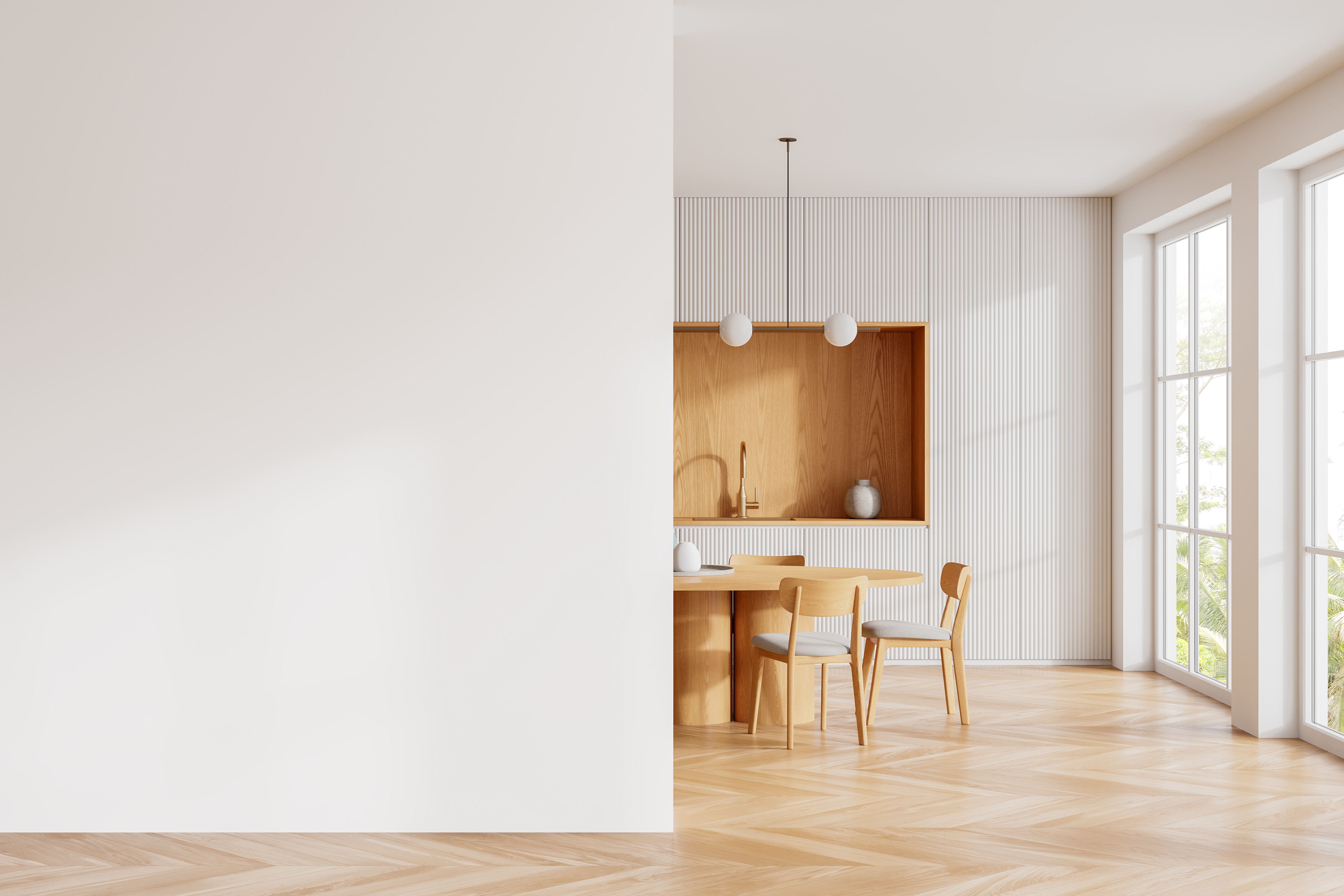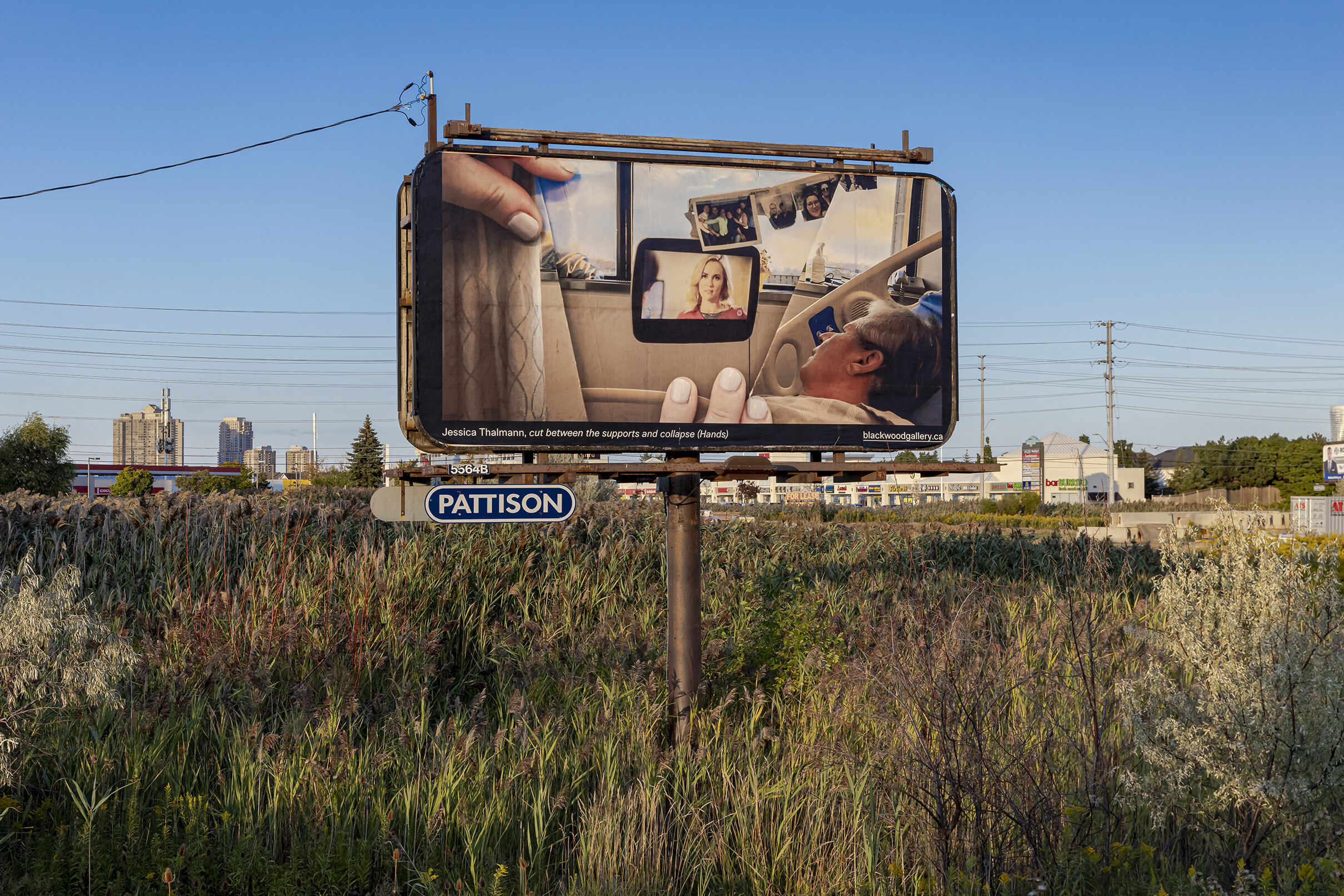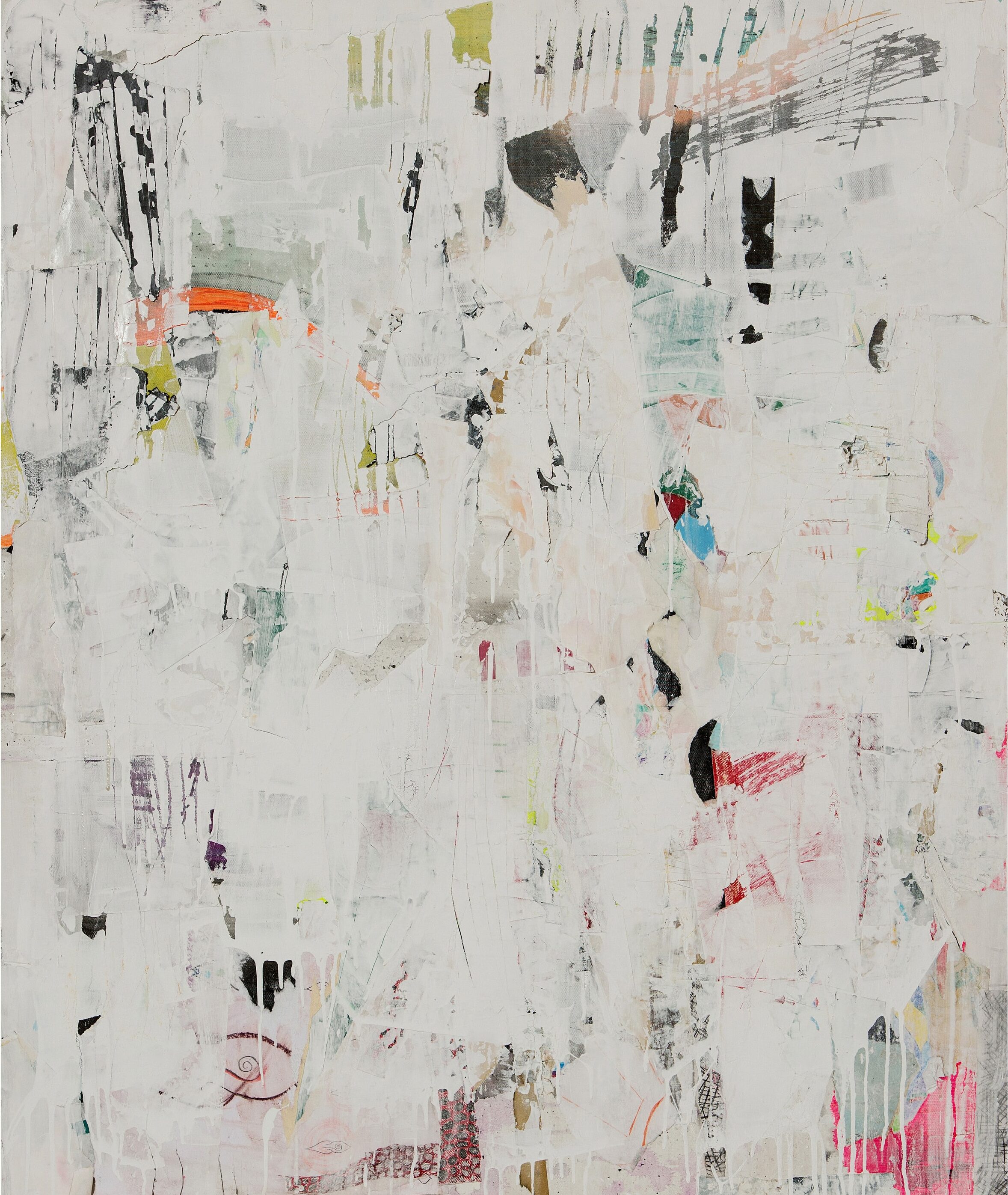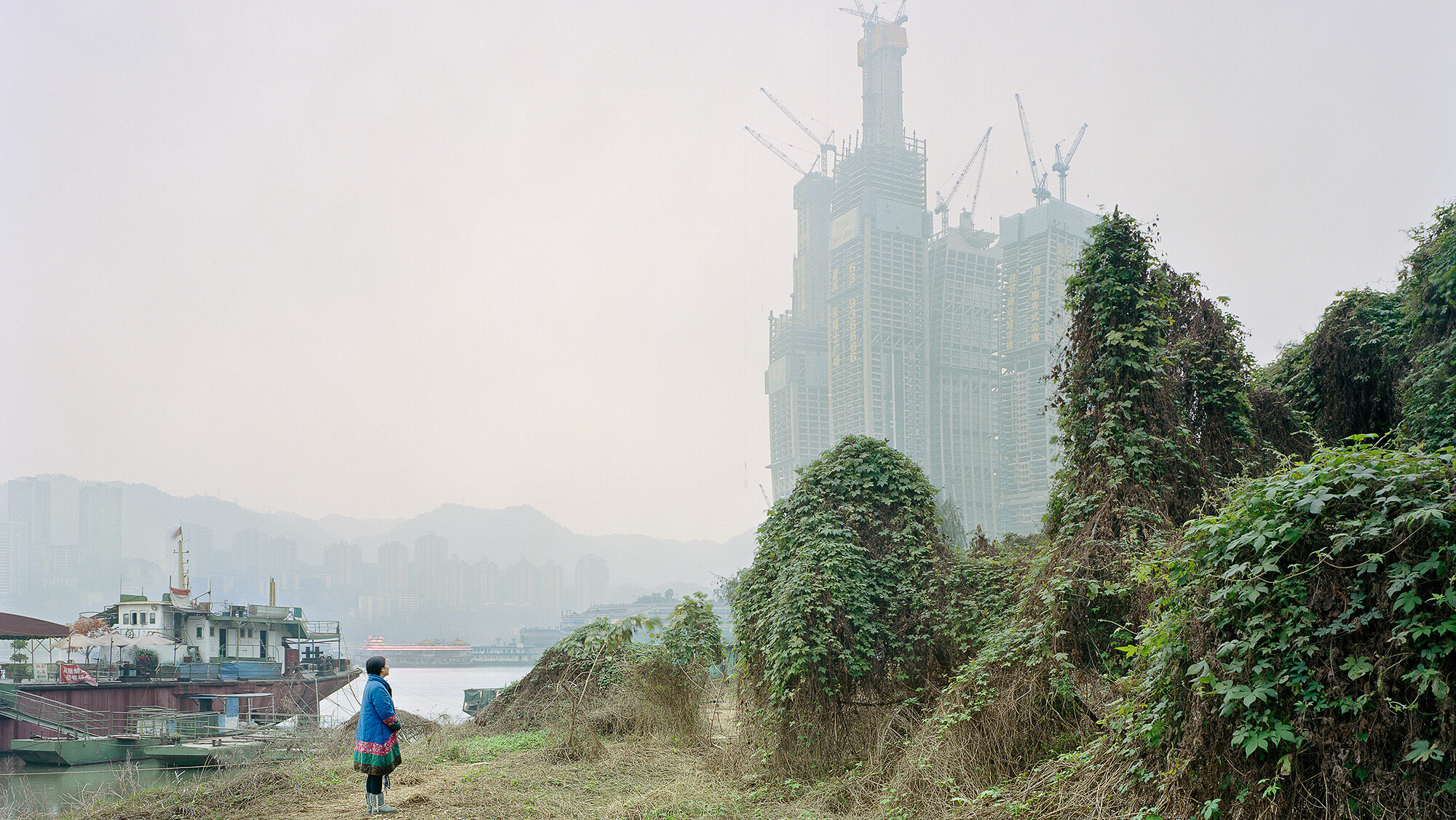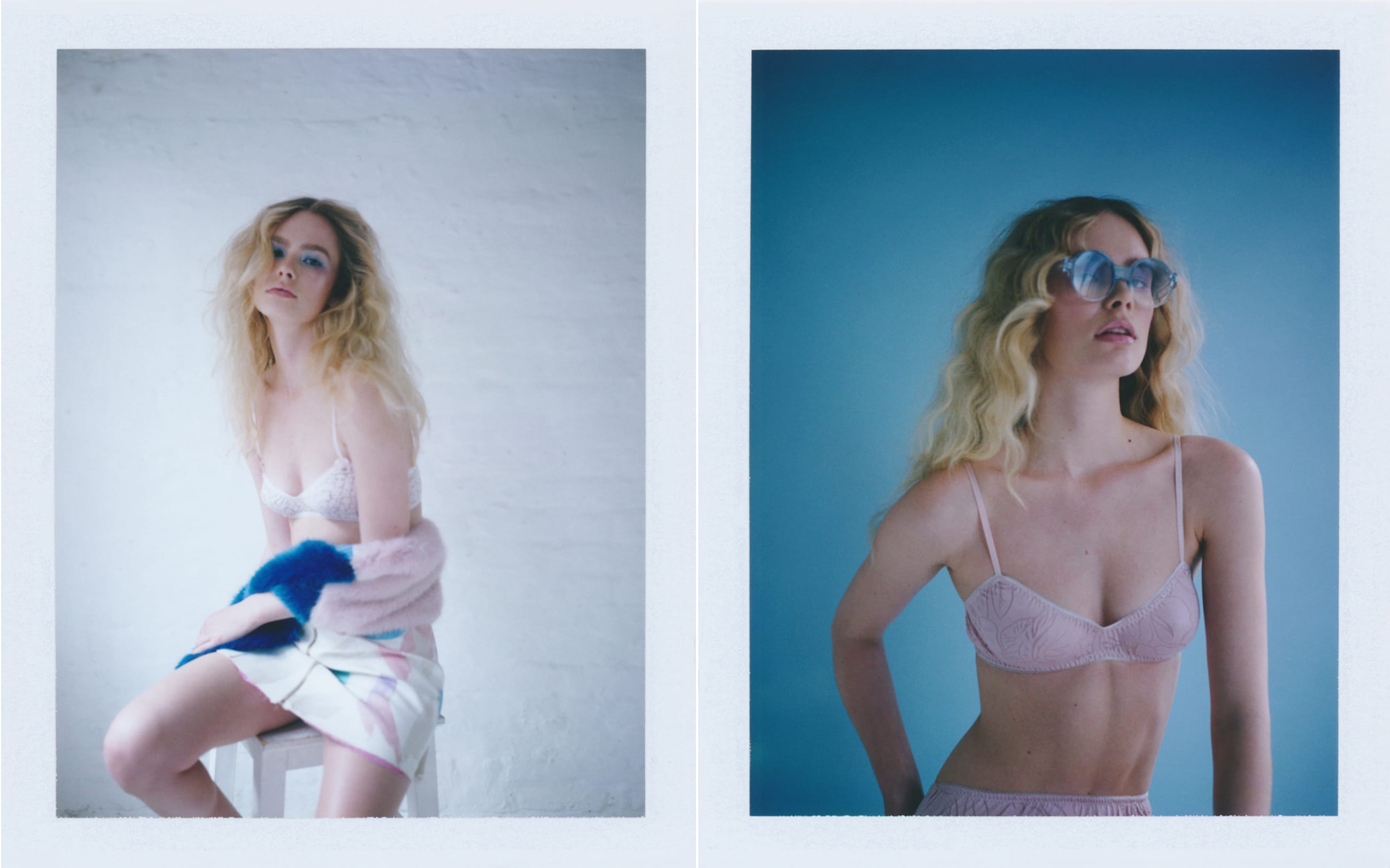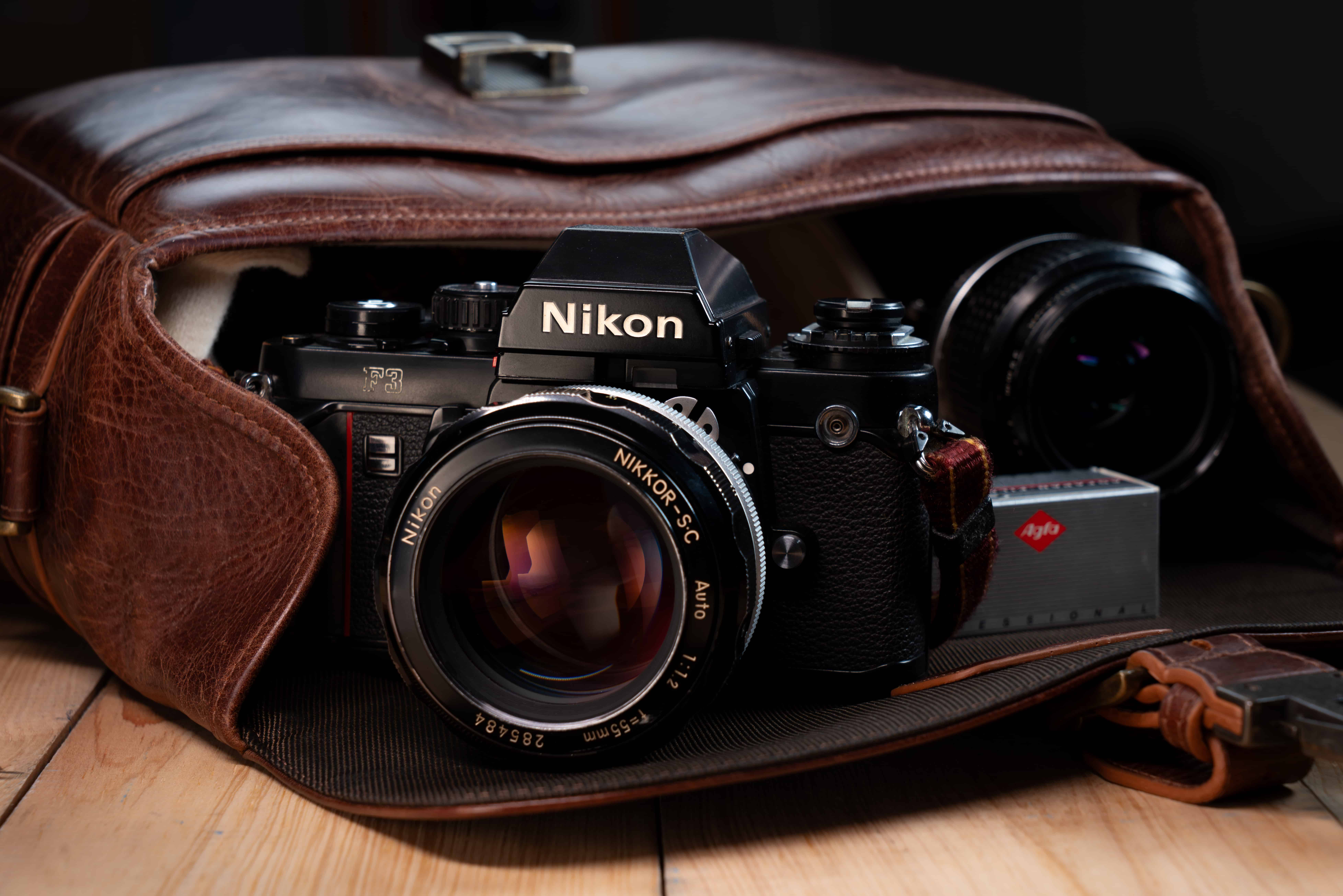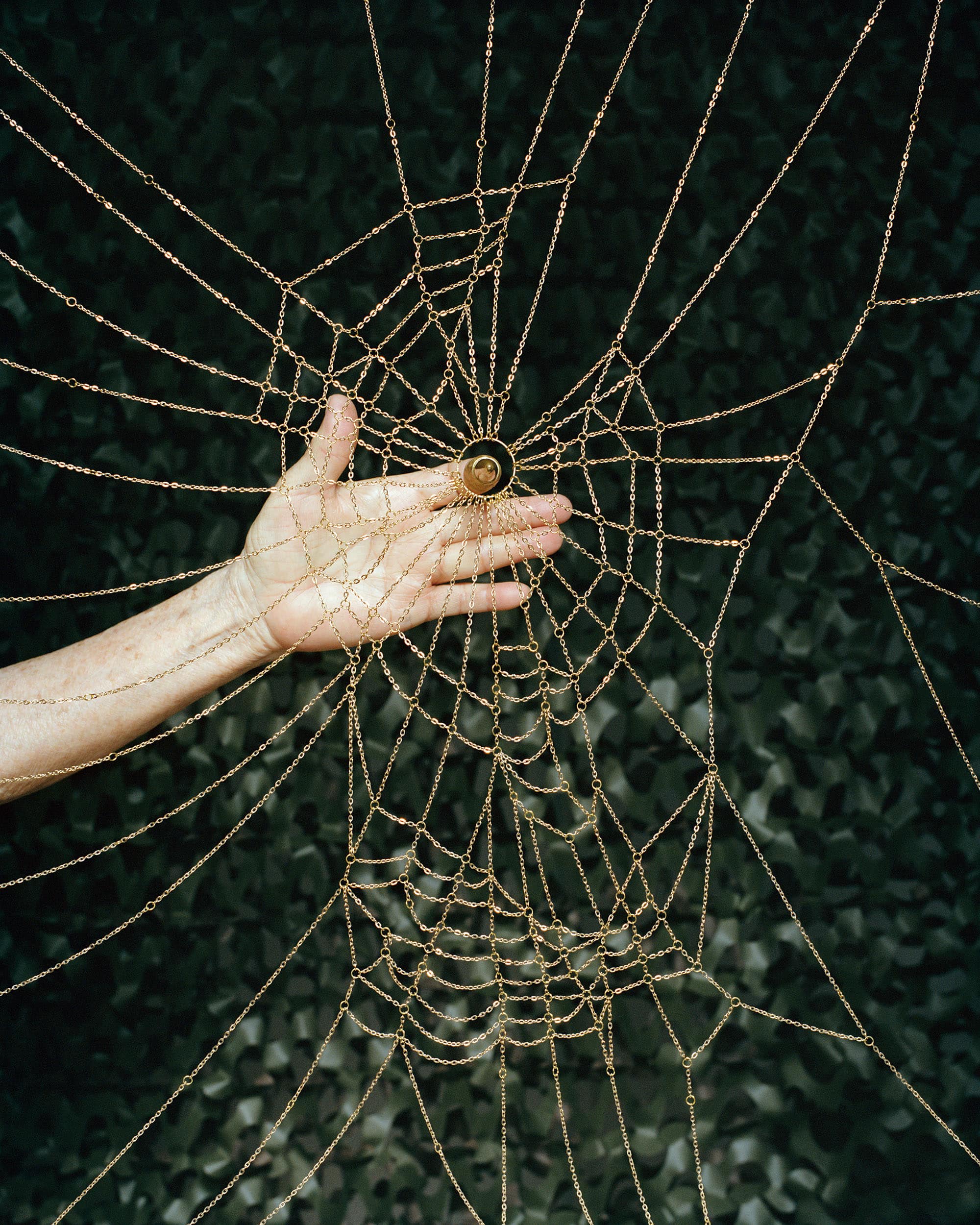Damola s'est entretenue avec Format lors d'une séance d'autoportraits au Lumina Studio Loft à Durham, en Caroline du Nord, alors qu'elle était en train de planifier la production de son projet de film "Votre présence s'étend au-delà de ces murs." Visitez la page et inscrivez-vous à sa liste de diffusion pour en savoir plus.
Pour voir d'autres travaux de Damola, Consultez son portfolio Format.
Vous pouvez visionner une partie de notre conversation ici :
Débuter en tant que photographe
Je m'appelle Damola Akintunde. Je suis un photographe américain d'origine nigériane basé à Durham, en Caroline du Nord. J'ai commencé à photographier en vingt-six ans, mais avant même d'être photographe, j'étais en prépa médecine, j'essayais d'être médecin - une expérience qui n'a pas vraiment fonctionné.
Je suis photographe depuis 2016 - j'explore également la narration visuelle à travers d'autres supports tels que la vidéo. À un moment donné, mes amis avaient besoin de photos pour leurs blogs, pour leurs différentes entreprises, des photos de fin d'études, et j'ai décidé "Je vais prendre un appareil photo juste pour explorer le monde qui m'entoure et documenter mes amis et ma famille." C'est ainsi que j'ai compris pour la première fois qu'il s'agissait d'une véritable carrière et d'une possibilité.
Une grande partie de mon travail reflète l'identité personnelle. Il reflète l'idée du corps et de l'espace, et sert à mettre en valeur la féminité noire et l'expérience noire à travers la diaspora.
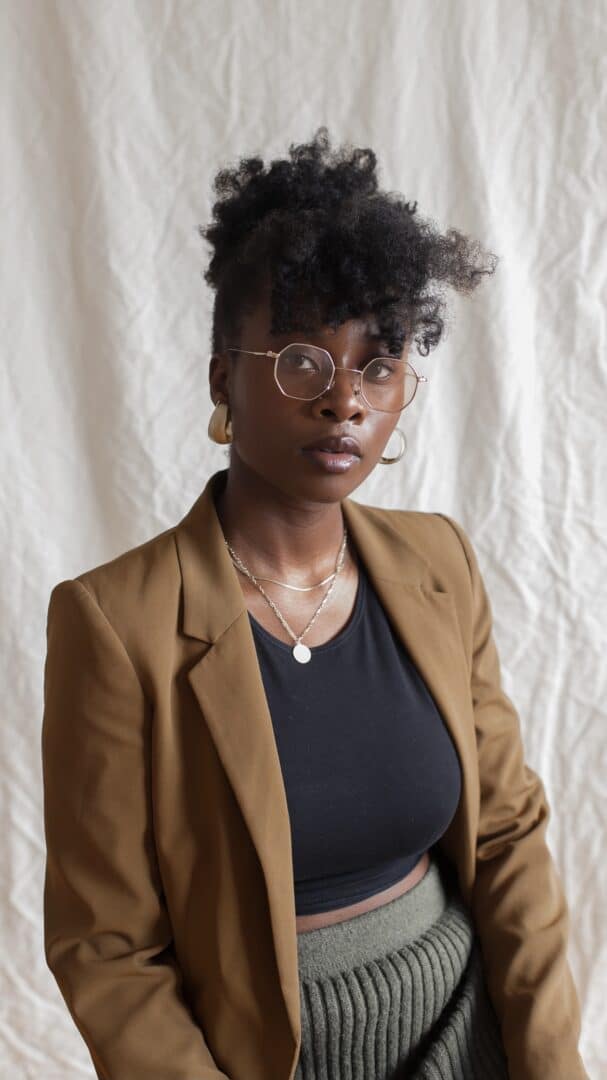
Raconter des histoires et le passage du temps avec une série de photographies d'autoportraits
Ainsi, lorsqu'il s'agit de planifier des autoportraits, traditionnellement, pour moi, c'est vraiment au pied levé. Je ne planifie pas beaucoup à l'avance.
Beaucoup de mes autoportraits, en particulier pendant la pandémie, étaient simplement des moyens de documenter qui j'étais à ce moment-là. J'ai en quelque sorte perdu cette période de temps pendant laquelle j'aurais été dehors à explorer, mais je peux encore avoir des souvenirs de ce que j'ai ressenti à ce moment-là.
Le processus comprenait le stylisme, beaucoup de recherche d'inspiration sur Pinterest ou des moyens non traditionnels comme les films, la musique. Chaque fois que je sentais que j'avais besoin de m'exprimer d'une certaine manière, je trouvais l'inspiration dans différents domaines. Ensuite, dans ma chambre, dans ma maison, je trouvais différentes façons de mettre en place diverses toiles de fond pour me documenter. En ce qui concerne le temps, ou la documentation du temps, ce que j'ai trouvé intéressant dans les autoportraits, c'est que je crée littéralement des archives de moi-même.
Cette séance est la première fois que j'ai pu planifier à l'avance, et mes autoportraits à venir seront un peu plus planifiés.
Maintenant que je réfléchis plus profondément à ce que je veux transmettre dans mes portraits, je planifie en m'inspirant de la composition d'autres films, de vidéos musicales, d'autres éléments de narration visuelle. Cela m'oblige à m'asseoir et à réfléchir à l'histoire que je veux raconter en utilisant la couleur, le cadrage, le maquillage et la beauté, le stylisme.
Je suis plus attentif à ce que ces différentes pièces évoquent pour le public et à ce qu'elles représentent pour moi en tant que personne.

Approcher le portrait à travers le prisme de la psychologie et de l'anthropologie médicale
Je pense que le fait d'être diplômée en psychologie et d'avoir une mineure en anthropologie médicale m'éclaire sur la manière dont j'aborde la narration. Les cours et les livres que j'ai lus m'ont beaucoup appris sur l'expérience de l'être humain, notamment en ce qui concerne l'identité personnelle et la compréhension de ce que nous sommes dans le contexte de la société.
Ces cours portaient également sur la guérison, et je pense que c'est la raison pour laquelle j'ai voulu être médecin au départ. L'idée de guérir les autres et d'être au service des autres m'intéresse beaucoup, mais je me suis rendu compte que le concept de guérison va au-delà de la médecine. Il réside dans la narration visuelle, dans la capacité à se voir soi-même, à avoir des récits qui représentent ce que l'on est en tant que personne, dans les archives de l'humanité, en fin de compte.
Ces sujets m'ont permis de devenir une personne capable de communiquer avec les gens et de leur poser des questions sur ce qu'ils croient être et sur la manière dont ils veulent être perçus.
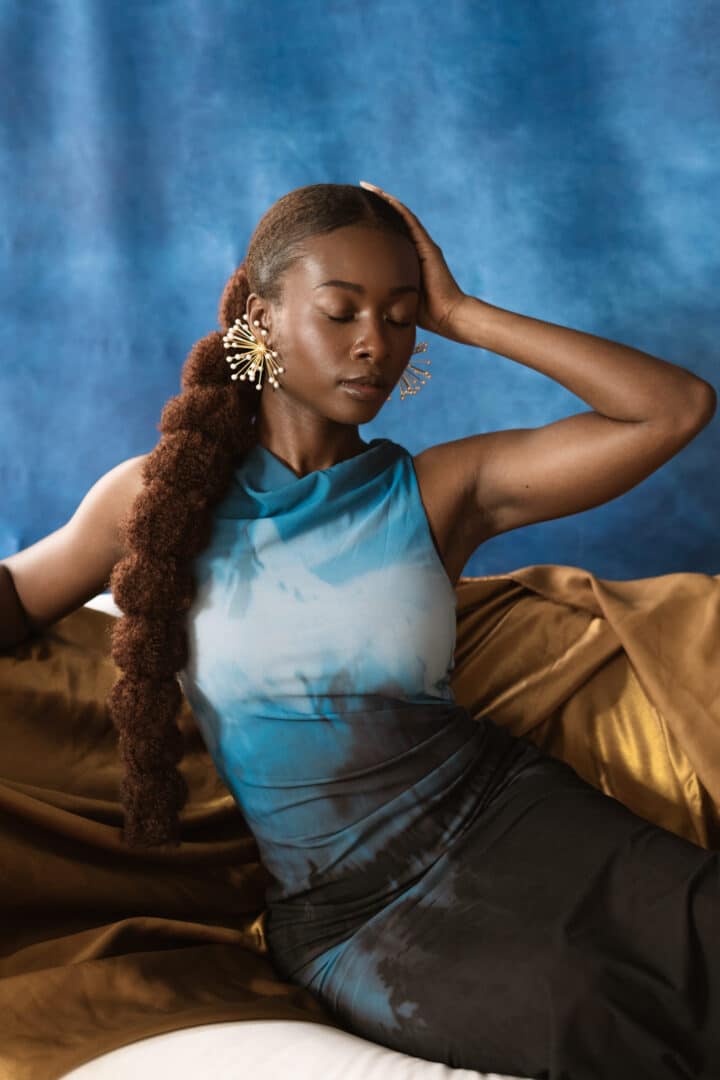
Se voir et créer une narration à travers l'autoportrait
La série "The Kitchen Table" de Carrie Mae Weems évoque pour moi beaucoup d'identité et de réflexion personnelle. Elle a parlé de la série comme si ces personnes ou cette femme dans ses portraits étaient une muse ou un personnage, plutôt qu'elle-même, et cela m'informe vraiment sur les façons de penser à la création de personnages dans mes autoportraits.
Je me suis rendu compte que mes autoportraits permettent aux autres, en particulier à de nombreuses femmes noires, de se voir elles-mêmes. J'ai tendance à réfléchir à la part de mon identité que je veux refléter dans chaque autoportrait, et à la manière dont cela s'inscrit dans le récit global de la féminité noire.
Elle m'a appris à réfléchir plus profondément à mes autoportraits, non seulement à moi en tant que personne physique, mais aussi à ce personnage que je crée et qui représente différentes parties de l'identité, de la réflexion sur soi, de la compréhension de ce que nous sommes.
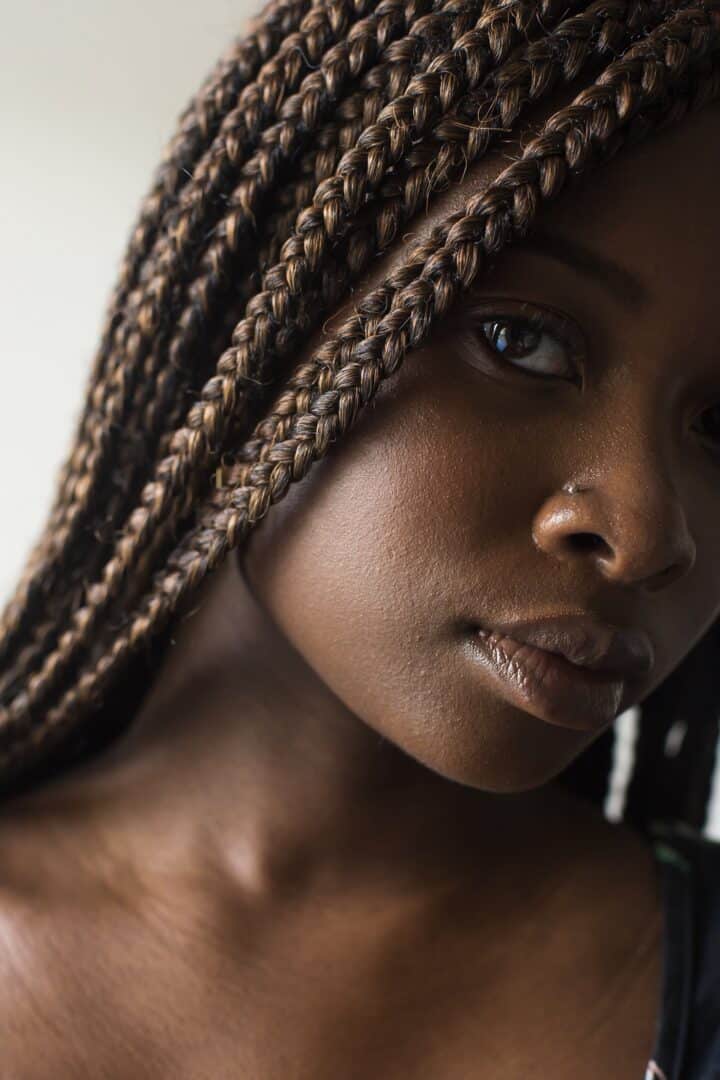
Les projets personnels comme point de départ d'un travail photographique commandé
Un grand nombre de projets que j'ai commandés sont nés de mes contacts avec Femmes noires photographes, Diversifier les photoset Photographie de femmes.
Les rédacteurs en chef, lorsqu'ils voient mon travail, surtout lorsqu'il s'agit de portraits de Noirs, semblent comprendre que j'ai la capacité d'établir un lien avec les personnes qu'ils présentent dans ces reportages. Je crois que l'accent que je mets sur l'identité aide également les rédacteurs en chef et les directeurs de la création à comprendre que je suis capable d'entrer dans cet espace et d'apporter un nouvel objectif et une nouvelle perspective lorsqu'il s'agit de documenter les gens et de s'assurer que leur humanité est également au centre des préoccupations.
Je n'ai pas toutes les réponses pour savoir pourquoi ils me choisissent pour faire certaines photos ou créer certaines images pour eux. J'espère qu'ils verront le travail que je fais pour des projets personnels et qu'ils verront que je peux entrer dans l'espace et apporter de la sécurité et de la chaleur à ceux qui sont documentés.
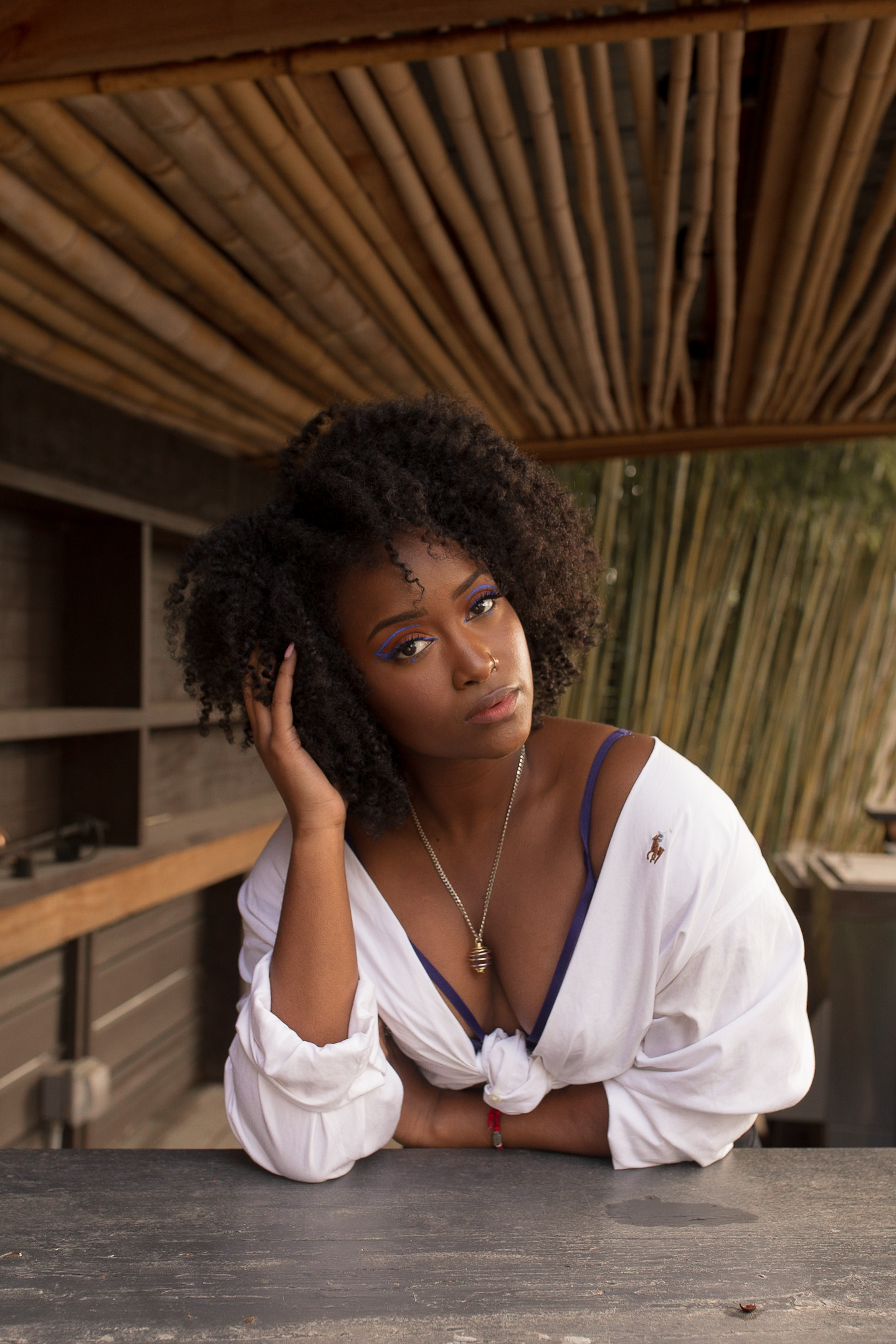
Collaborations permanentes et croissance artistique
Une expérience que j'apprécie beaucoup est celle d'une femme noire nommée Aziza avec laquelle je travaille assez fréquemment. Nous avons l'habitude de travailler ensemble chaque année - je m'améliore dans mon métier et elle se sent plus à l'aise devant la caméra. Nous avons maintenant des rapports constants l'une avec l'autre, et j'ai cette série où vous pouvez nous voir évoluer toutes les deux.
J'apprécie vraiment l'idée d'avoir un modèle ou un sujet avec lequel on grandit, mais aussi de l'avoir comme amie et partenaire créative, avec laquelle nous trouvons toujours des moyens de grandir et de nous sentir plus à l'aise en tant qu'artistes. C'est quelque chose qui me tient vraiment à cœur, en particulier avec les partenariats de femmes noires ou les femmes noires créatives - trouver des moyens de se connecter en communauté les unes avec les autres.
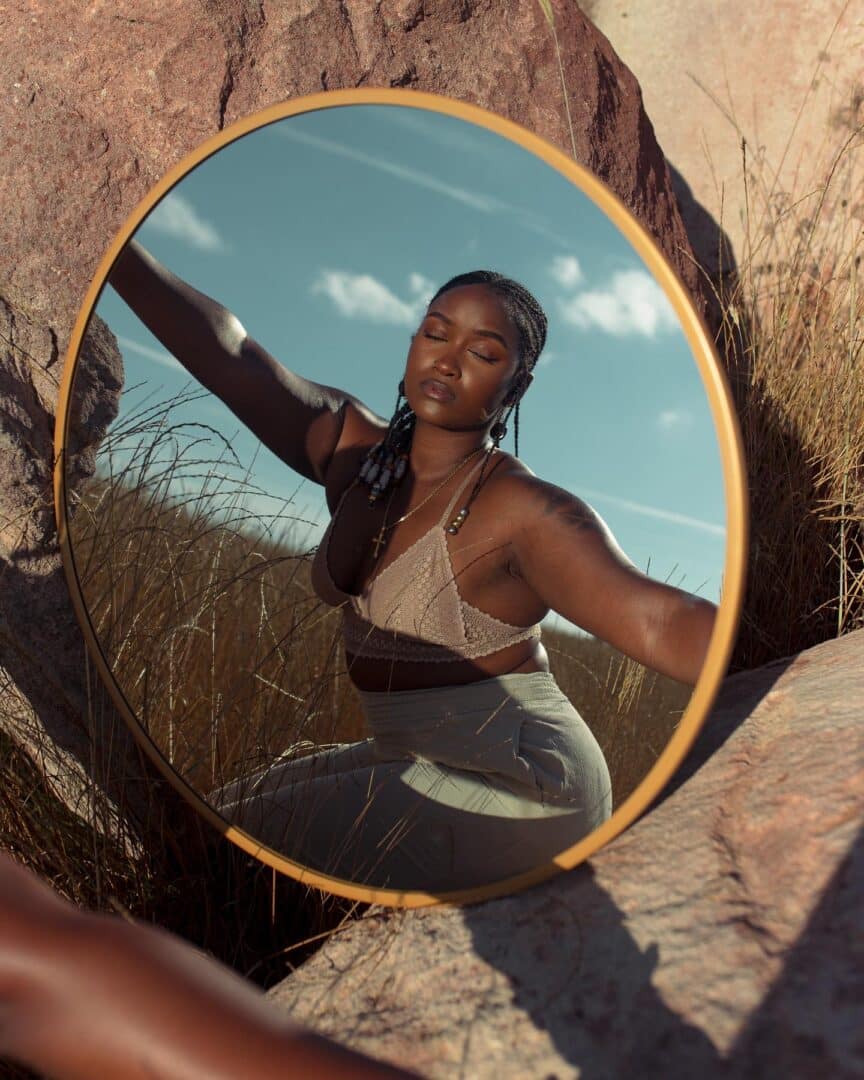
La puissance de la création de son propre récit
Il faut parfois beaucoup d'énergie et de vulnérabilité pour se retrouver devant son propre appareil photo, mais je trouve tellement gratifiant de pouvoir contrôler sa propre perception, ses propres récits, sa propre capacité à se montrer dans le monde. Je pense que tout le monde devrait se sentir obligé, à un moment ou à un autre, de trouver des moyens de se documenter, que ce soit avec son appareil photo ou son téléphone. Je pense que certaines personnes pensent que c'est vaniteux - les selfies, à un moment donné, ont été moqués et le sont peut-être encore. Mais je pense qu'il est très puissant de pouvoir dire "Voilà qui je suis et comment je veux que les gens me voient", et de laisser les autres apprécier ce que vous avez à offrir et ce que vous avez en tant que personne. L'autoportrait et la documentation en général ont beaucoup de pouvoir, et il existe d'autres moyens de le faire. Il n'est pas nécessaire de faire des portraits, il y a tellement d'options. Je me suis également essayée au journal vidéo et au journal audio.
Je suis dans un espace où j'explore beaucoup le travail vidéo parce que je crois qu'il y a des moyens de développer l'image unique et de trouver des moyens de la rendre dynamique. C'est une transition, mais je suis curieux de savoir ce que cela signifie de raconter des histoires de manière plus dynamique.
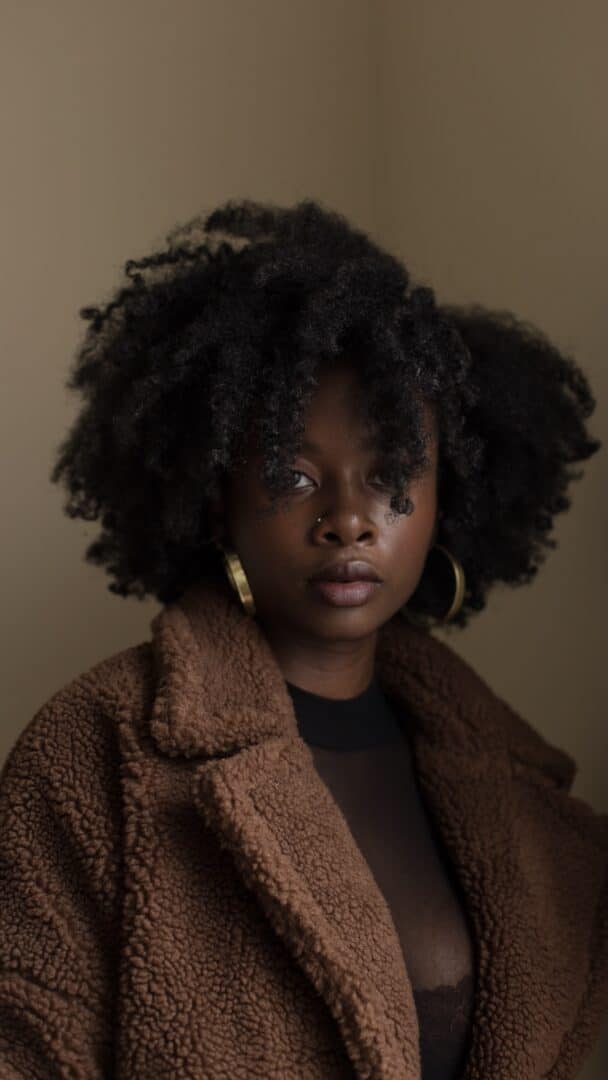
Conseils aux créateurs émergents : S'appuyer sur les échecs
Le conseil que je donnerais aux artistes ou photographes en herbe, et que j'apprends toujours moi-même, c'est qu'il ne faut pas avoir peur d'échouer en temps réel.
En tant que photographe autodidacte, il m'est arrivé à plusieurs reprises de ne pas être sûr de ce que je faisais. Je ne connaissais pas exactement les compétences techniques pour certaines choses que je voulais faire, mais cela m'a obligé à essayer en temps réel, à me lancer et à accepter de ne pas être sûr de ce que je faisais. Parfois, il faut laisser aller les choses et espérer le meilleur, et on est vraiment récompensé lorsqu'on ne se penche pas trop sur les "et si", mais plutôt sur la question "qu'est-ce qui est possible, qu'est-ce qui est à venir" de la création. J'encourage tout le monde à trouver des moyens d'accepter d'échouer, car cet échec fait de vous un meilleur créateur.

L'influence de la musique dans le projet en cours "Your Presence Spreads Beyond These Walls" (Votre présence s'étend au-delà de ces murs)
Ma série d'autoportraits est en fait inspirée par mon projet en cours, "Your Presence Spreads Beyond These Walls" (Votre présence s'étend au-delà de ces murs).
Il s'agit d'un court métrage et d'une série de photos qui illustreront mon passage à l'âge adulte après et pendant la pandémie - en essayant de trouver ma voie. J'aurai l'occasion de partager différentes parties de mon identité et, je l'espère, de permettre à d'autres, en particulier aux femmes noires, de se sentir à l'aise dans l'exploration de toutes les parties de leur identité.
J'ai eu l'idée de "Votre présence s'étend au-delà de ces murs" en 2020, alors que j'étais assise en train de réfléchir à l'idée de qui je suis en dehors du bruit. Qui suis-je en dehors des limites de la société, qui suis-je en dehors des pressions de la société, des pressions familiales.
Cela m'a forcé à réfléchir au fait que la musique m'aide à grandir en tant que personne et à m'explorer, et le projet est donc très influencé par la musique. Une partie du projet est également influencée par mon héritage nigérian - je suis très intéressée par le mouvement Alte au Nigeria en ce moment. Je m'intéresse également à une grande partie du r&b alternatif qui vient de sortir. Il y aura donc plusieurs numéros, chacun d'entre eux représentant l'espace influencé par certains genres musicaux.
Le projet vise à m'aider à comprendre qui je suis, mais aussi à trouver des moyens de me présenter aux autres, et à leur permettre de trouver des moyens d'apprendre à se connaître et à grandir en tant que personne.
